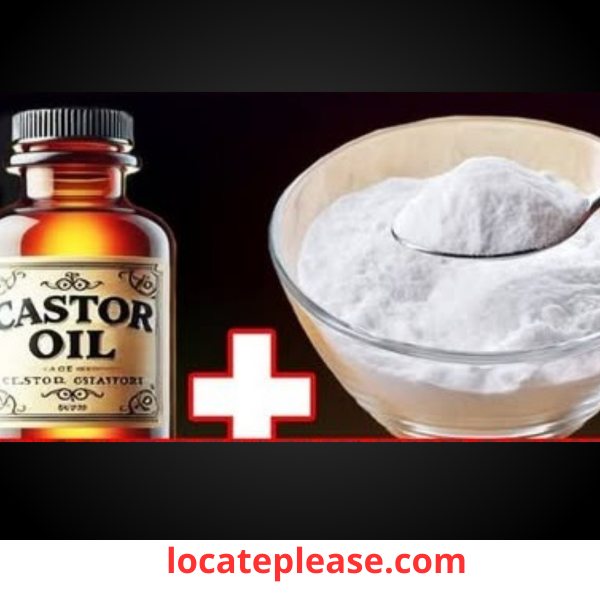In recent years, social media and wellness blogs have been abuzz with claims about the miraculous benefits of mixing castor oil with baking soda. Headlines like “Doctors Are Speechless!” or “This Simple Home Remedy Will Change Your Life!” are designed to grab attention and spark curiosity. But before you rush to your kitchen cabinet to whip up this concoction, it’s essential to separate fact from fiction and understand the potential risks and benefits.
What is Castor Oil Used For?
Castor oil has been used for centuries in traditional medicine and beauty routines. Here are some of its most common applications:
- Anti-inflammatory Properties : Castor oil contains ricinoleic acid, which is believed to have anti-inflammatory effects. This makes it a popular choice for soothing irritated skin, reducing puffiness, and even relieving joint pain when applied topically.
- Hair Care : Many people swear by castor oil as a natural remedy for promoting hair growth, moisturizing the scalp, and combating dandruff.
- Laxative Effects : When ingested in small amounts, castor oil acts as a natural laxative, helping to relieve constipation. However, it should only be used under medical supervision due to its potency.
While castor oil has a long history of use, its effectiveness varies depending on the individual and the condition being treated.
What About Baking Soda?
Baking soda (sodium bicarbonate) is another versatile household staple with a range of uses:
- Alkalizing Properties : Baking soda can neutralize acids, making it effective as an antacid for heartburn or indigestion.
- Exfoliation : Its fine granules make it a gentle exfoliant, helping to remove dead skin cells and unclog pores.
- Odor Neutralizer : From deodorizing refrigerators to freshening breath, baking soda is a go-to solution for eliminating unwanted odors.
Like castor oil, baking soda has its own set of benefits—but also potential drawbacks if misused.
Combining Castor Oil and Baking Soda
The idea behind combining these two ingredients is that their purported properties—castor oil’s anti-inflammatory and moisturizing effects, plus baking soda’s exfoliating and alkalizing abilities—could create a powerful remedy for various health and beauty concerns. Advocates claim this mixture can help with:
- Acne Treatment : Proponents suggest that the antibacterial properties of baking soda and the hydrating effects of castor oil may reduce acne and improve skin texture.
- Joint Pain Relief : Some users apply the mixture topically to soothe sore muscles or joints, citing castor oil’s anti-inflammatory properties.
- Detoxifying Masks : The combination is sometimes touted as a DIY detox mask to cleanse the skin and promote a radiant complexion.
However, while these claims sound promising, there’s limited scientific evidence to support them. Most testimonials are anecdotal, meaning they’re based on personal experiences rather than rigorous studies.
A Word of Caution
Before jumping on the castor oil and baking soda bandwagon, here are some important considerations:
- Skin Irritation : Both ingredients can be harsh on sensitive skin. Baking soda, in particular, has a high pH that can disrupt the skin’s natural barrier, leading to dryness, redness, or irritation. Similarly, castor oil may clog pores for some individuals, potentially worsening acne.
- Interactions with Medications : If you’re taking medications—especially for digestive issues, inflammation, or skin conditions—it’s crucial to consult a healthcare professional before trying new remedies.
- Overuse Risks : Using baking soda too frequently can strip the skin of its natural oils, while excessive use of castor oil may cause gastrointestinal discomfort if ingested.
Are Doctors Really “Speechless”?
The phrase “doctors are speechless” is more likely a marketing gimmick than an accurate reflection of medical opinion. While doctors appreciate the value of natural remedies, they typically prioritize treatments backed by clinical research and evidence.
Most healthcare professionals would advise caution with unverified home remedies like this one. Instead, they recommend consulting a dermatologist or physician to address specific concerns safely and effectively.
Should You Try It?
If you’re curious about the castor oil and baking soda mixture, here are some tips to minimize risks:
- Patch Test First : Apply a small amount of the mixture to a discreet area of your skin (like your wrist) and wait 24 hours to check for any adverse reactions.
- Use Sparingly : Limit use to once or twice a week to avoid over-drying or irritating your skin.
- Consult a Professional : Always seek advice from a doctor or dermatologist, especially if you have underlying health conditions or sensitive skin.
While the idea of mixing castor oil and baking soda may sound appealing, it’s essential to approach such remedies with a healthy dose of skepticism. While some people report positive results, the lack of scientific evidence means we can’t guarantee its safety or efficacy.
Instead of falling for sensational headlines, focus on proven methods for achieving your health and beauty goals. And remember, when in doubt, always consult a trusted healthcare provider. After all, your well-being is worth more than a viral trend!
Have you tried this mixture—or heard about other surprising home remedies? Share your thoughts below!










